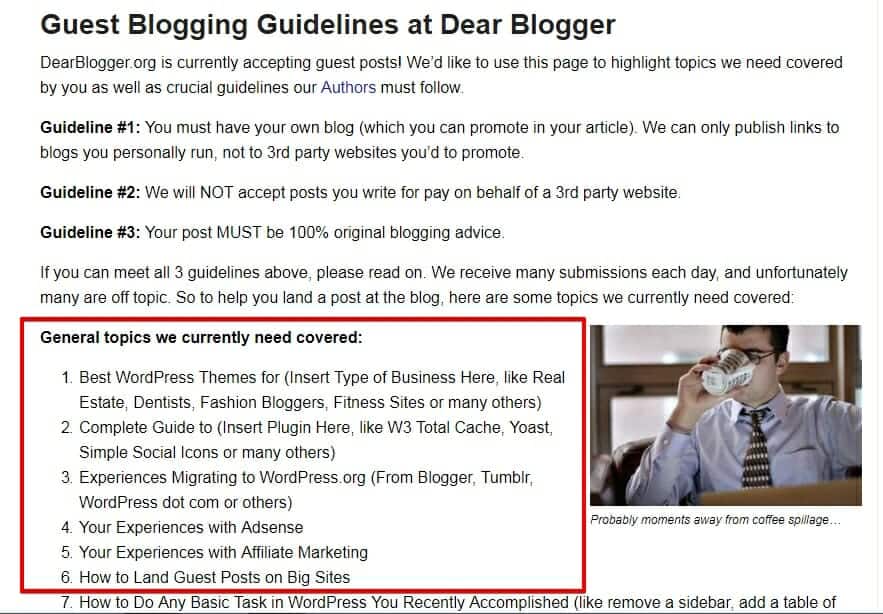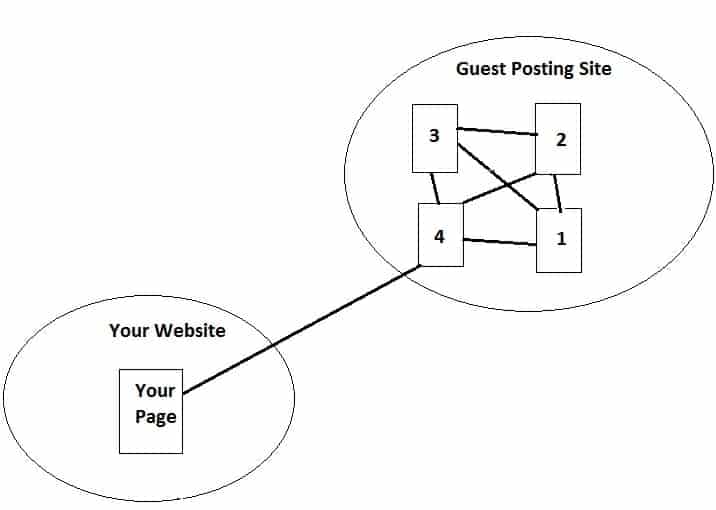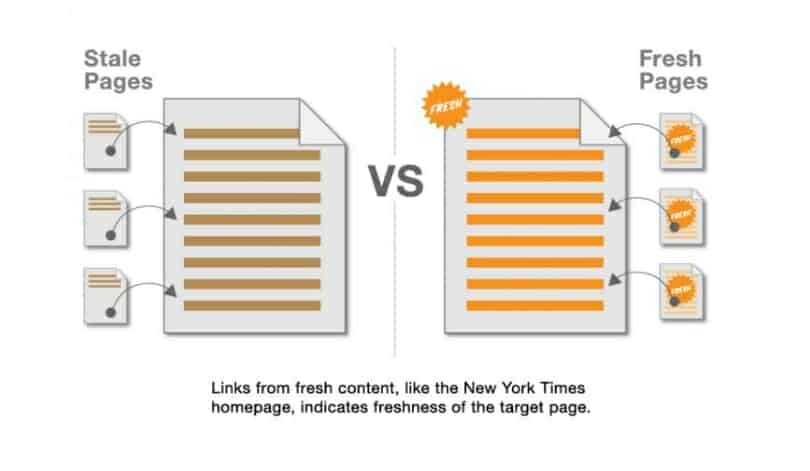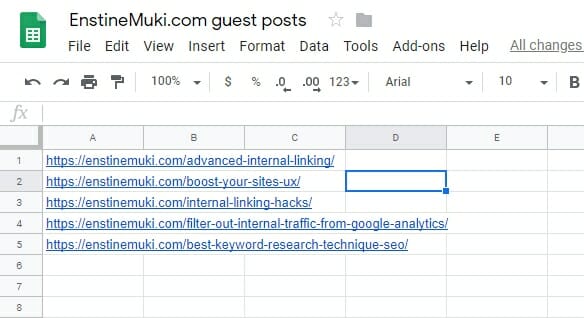This is a guest post by contributing author Nikola Roza. He enjoys blogging about SEO. Today he shares how you can keep your guest post links stronger by adding internal links for higher page ranking results.
You’ve read the title so you know what to expect here, right? A way to keep your guest post backlink strong, juicy and powerful at all times.
But how?
The answer- through strategic internal linking on a guest site, through flowing equity to all your guest post posts and then through to your money site.
Wanna learn more?
I know you do… so keep reading!
The problem with all links, especially backlinks
The big problem with your guest posts is that as they become older, they become stale too. And as they’re pushed down the site architecture by newer posts, they lose quite a bit of link juice they once had.
I mean, from the homepage where they once were (when first published) to being buried on page 10, 20, 30 and below.
So it’ normal they become weak and that effect is called link decay.
The good news is that you can rejuvenate your guest links and it’s easy, fast and effective.
Here’s how…
Introducing “The Hub” technique-What is it?
Definition– It’s you having placed several guest posts on one website and then interlinking them in such a way that each post helps all others keep their freshness and ranking power.
It’s whole process we’re talking about, so here’s quick breakdown:
Step #1- make friends with the blogger
I’m sure you know this spiel all too well, so I won’t dwell on it too much.
But, in general, to get a guest post published somewhere you need to get on that blogger’s radar, and the best way to do that is by:
- sharing their stuff
- commenting on their posts
- linking to them and then them letting them know about your link
Do it consistently, and over time, your name will become synonymous with “helpful blogger”, and they will be very receptive of your guest post pitch down the line.
This is the process, and it works very well, but sometimes there are shortcuts to this.
For example, I admit I only recently learned of Dear Blogger, and through Ryan Biddulph’s guest post here. And normally, I would never even consider guest posting here so soon.
However, when I checked out the guest posting guidelines I saw that Greg is actively encouraging bloggers to send their articles to be published (if they’re up to snuff and pertain to topics Greg highlighted)

so I tried my luck and here you are reading my guest post.
Thank you Greg!
Moving on…
Step #2- Publish 5 guest posts on their site.
This is obviously going to be a long term game but you need several guest posts for the Hub technique to work.
Spread them out over several months.
#3- Interlinking- The pattern you need to follow
This is crucial to get right.
- When you publish your second guest post- you will link to first
- When you publish your third post- you will link to second and first
- When you publish your fourth post- you’ll link to third, second and first
- When you publish your fifth- it’ll link to the first four.
Pro tip– if possible go back and edit the first four guest posts, so they all link to the fifth but also to every other in the set of five.
That will get the juice flowing nicely and unrestricted.
Note: here’a nice illustration of what going on. The image is mine, I made it for one of my recent contributions to Business2Community.com.
So the image is slightly different than what I described above. (for example, there are four posts instead of five)
But the principle is the same.

#4- Send backlinks to the FIFTH post
When you link to the fifth post from other guest posts and your site, you send precious equity to it.
This helps it avoid staleness and also boosts its authority quite a bit.
And, since there are internal links on that page too, some of that equity flows to your other guest posts and thus makes them stronger.
Note: see the image above for illustration.
Why this works?
The Hub technique can be a wonderful addition to your SEO arsenal, and for several reasons:
a) Internal links flow Page Rank
Page Rank keeps your guest posts strong and relevant in the eyes of Google. This means that your guest post will rank higher in Google.
So more potential traffic to your site.
b) Internal links pass Freshness factor
Freshness is an important ranking factor and pages that get links are considered relevant and fresh by Google. But freshness also flows trough internal links which you have pointing to your other guest posts.

More Page Rank and more freshness = stronger backlinks pointing to your site.
So your site will ultimately rank higher in Google.
d) Compounding SEO gains
This is more of a passive benefit, but if your post is really good then what can happen is that other people will find it valuable and link to it, and since they’ll all be interconnected that’s a whole bonanza of passive SEO benefits for you.
One that unfolds over time and that you don’t necessarily keep track of, but one that’ll manifest with a higher ranking is Google.
F) Finally (I saved the best for last)- It’s doing good SEO for… them
Them being the webmasters who let you be a guest on their site.
Think about it:
You’re not doing anything shady, black or grey hat.
No, you’re simply using internal links to link to their articles on their site and this helps their rankings the most.
The said webmasters have every reason to be pleased with you, which means more guest posting opportunities in the future.
The HUB works!
How about an example?
I’ve had a privilege to guest post on EnstineMuki.com several times already.

And you can bet I made sure to interlink my articles properly.
So the result is that when I link to my fifth guest post there the juice is spread across to the whole set of five articles.
This keeps my pages strong and fresh and my links help me rank the most.
And the effect is long lasting and compounds over time.
Conclusion-Stringer backlinks= more rankings, and higher. Simple.
White hat SEO works.
The Hub technique you just witnessed is as white hat as it gets. Because all you’re really doing is smart and strategic internal linking.
Now I ask you:
Is it your fault that you know your SEO, and that you’ve finally put your creativity hat on?
Is it your fault that your strategy results in:
- more rankings
- more traffic
- more sales
- more profit?
No, if anyone is to blame- it’s Google.
Yes, let’s all point our fingers at Google and frown our faces at it.
The problem?
It’s hard to frown when you’re having success with Google SEO.
You agree?
Leave me a comment below,
thank you:)

Nikola Roza likes nothing more than to blog about SEO. Seriously, he needs to get out more. Because ever since he discovered SEO he’s been buried in blog posts about newest and greatest, and oldest and tested SEO techniques.
Yes, he’s enjoying himself so much and if you want to partake in his joy- visit his blog below: https://nikolaroza.com/






Very informative article on internal linking .Thanks for sharing this insightful article.
Hello Nikola.
Awesome Post Man. Interlinking is a good onpage SEO strategies. It helps search engines to crawl your website and also help users to find more relevant posts which reduce your blog bounce rate as well. Thanks for sharing this beautiful post.
Regards,
Vishwajeet